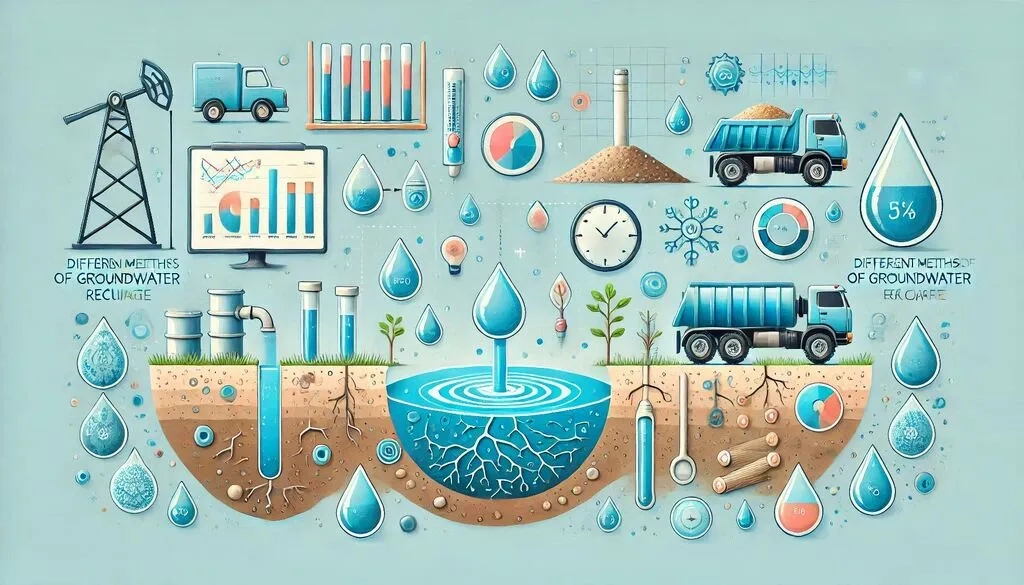
Have you ever wondered if there is a way to reliably recharge groundwater resources and potentially address future challenges caused by climate change and increasing water demands?
What if the estimation of groundwater recharge held the key to safeguarding against unforeseen challenges, from climate change impacts to ever-growing water demands?
Groundwater is a crucial part of water resources, especially in arid and semi-arid areas. The scale and rate of abstraction due to massive expansion in pumping capacity and the rate of groundwater level decline have made the aquifer system vulnerable to over-absorption; therefore, groundwater recharge and conservation programmes are needed in these regions (Gumuła-Kawęcka et al., 2022). It is necessary for groundwater development projects to know the exact rate at which groundwater recharges. This is because accurate estimates of the rate at which groundwater recharges are needed for long-term groundwater management, protecting water quality, managing streamflow and riparian ecosystems, recharging aquifers, modeling groundwater flow, and moving contaminants. These estimates are also important for smart growth in areas that are rapidly urbanizing, industrializing, and farming (Singh et al., 2019). The groundwater recharge process is that water enters the saturated zone and remains there until it reaches the water table (Waldowski et al., 2023).

Table. Advantages and Disadvantages of Different Methods of Groundwater Recharge Estimation (Brief Table)
Groundwater Recharge Estimation Techniques | Advantages | Disadvantages |
Numerical Approach | Scenario Analysis Integration of Multiple Processes | Data Requirements Complexity |
Tracer Method | Identification of Flow Paths Temporal Variability | Difficulty in Tracer Selection Limited Spatial Coverage |
Water Budget Method | Comprehensive assessment Applicability to Various Scales | Data Limitations Limited Representation of Processes |
Water Table Fluctuations (WTF) | Continuous Monitoring. Suitability for Shallow Aquifers | Limited Depth Influence of Surface Water |
Empirical Method | Simplicity Quick Results | Limited Applicability. Lack of Mechanistic Understanding |
Lysimeter | Direct Measurement Site-Specific Data | Cost Interference with Natural Processes |
To download Full detailed Table of Advantages and Disadvantages of Different Methods of Groundwater Recharge Estimation Click here
1. Groundwater Recharge Estimation Techniques
Estimating groundwater recharge is one of the most difficult measures regarding groundwater resource management (Collenteur et al., 2021). Recharge system methods require decisions about possible flow mechanisms. After these mechanisms are identified, calculations can be made to estimate recharge. A careful examination of the field or evidence is essential before identifying possible flow mechanisms. It is not correct to assume that because a successful method for estimating recharge has been developed in one location, the same method can be applied in another similar situation (Rushton, 1988).Recharge rates depend on numerous catchment properties, including land use, vegetation type and density, soil type, land cover, and the geology of the regolith, together with temperature and the amount, duration, and frequency of rainfall (Barron et al., 2012). This results in the distribution and amount of recharge being difficult to predict. There are different methods of groundwater recharge estimation depending on specific conditions in the study areas, such as data types, land use, recharge rate, and spatial and temporal scale. Estimates of recharge, by whatever method, are normally subject to large uncertainties.
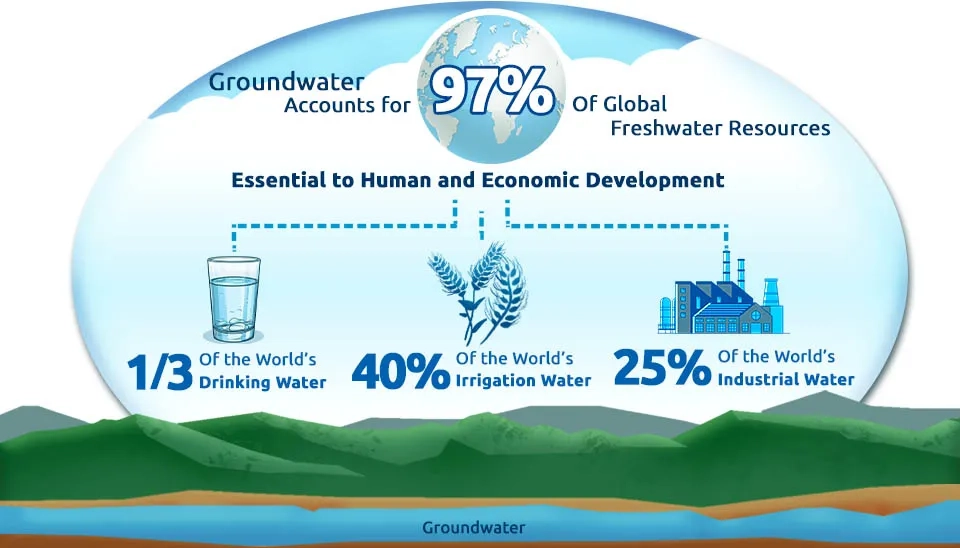
1.1. Numerical Approach
Groundwater recharge estimation using numerical models involves the use of mathematical representations of the subsurface to simulate the movement of water through the soil and rock layers and to quantify the amount of water that replenishes the groundwater system. Numerical models are powerful tools that help hydrogeologists understand and manage groundwater resources (Lio et al., 2014).
Equations that describe groundwater flow and transport processes are solved using various types of models. Some types of groundwater flow models are analytical ones that look at flow in a flat aquifer and others use complicated computer programs to imagine how active substances move through three-dimensional porous media that are not all the same. Common numerical modeling tools include MODFLOW, FEFLOW, and HYDRUS.
It's important to note that groundwater recharge estimation using numerical models requires expertise in hydrogeology, mathematics, and computer modeling. Additionally, ongoing monitoring and refinement of the model are essential to account for changes in the natural system over time (Abraham et al., 2021). Before developing a numerical model, a conceptual model of the groundwater system must be established. This involves identifying key hydrogeological features such as aquifers, confining layers, and recharge areas (Yang et al., 2010).
Accurate data on precipitation, evaporation, land use, soil properties, and geological conditions are crucial for numerical modeling. The model is calibrated by adjusting parameters to match observed groundwater levels and other field data. To make the model more accurate and to get rid of any differences between the simulations and field data, the hydrogeologic conditions are changed during the model calibration and verification process (Chen et al., 2012). Once calibrated, the model can be used to simulate groundwater recharge. This involves representing processes such as infiltration of precipitation, percolation through soil layers, and potential recharge to the aquifer (Singh, 2014). Numerical models allow hydrogeologists to assess different scenarios, such as changes in land use, climate, or water management practices, and their impact on groundwater recharge. This information is valuable for sustainable groundwater resource management.
1.2. Tracer Method
Estimating groundwater recharge using tracer methods involves the use of various tracers to track the movement of water through the subsurface and quantify the rate at which water is replenishing groundwater systems. Tracers are substances or isotopes that can be easily detected and traced as they move through the hydrological cycle (Filippini et al., 2015).
There are several tracers usually used in the research of groundwater recharge. Chemical tracers include substances like bromide (Br-) and nitrate (NO3-), which can be injected into the subsurface and monitored as they move with the water. Environmental tracers like chloride (CL-), tritium (3H), deuterium (2H), and oxygen-18 (18O) can be used as tracers to estimate recharge rates. Tritium , deuterium , oxygen-18 , are most accurately simulate the movement of water because they form part of the water molecule (H2O). Applied organic dyes such as fluorescein (C20H12O5); and soluble air including chlorofluorocarbons (CFCS), sulfur hexafluoride (SF6), and noble gasses such as helium (He) and 39Ar, 81Kr, and 85Kr (Cartwright et al., 2017).
Tracers are typically injected at some depth or applied to the soil surface, which is then transported downward by unsaturated-zone water. Monitoring the concentration of tracers over time helps infer the movement of water and estimate recharge rates. The average transport velocity indicates a recharge rate. The analysis of samples involves measuring the concentration of tracer in groundwater at different depths and locations. The movement of tracers over time provides information about the flow pathways and rates of groundwater recharge (Koh et al., 2022).
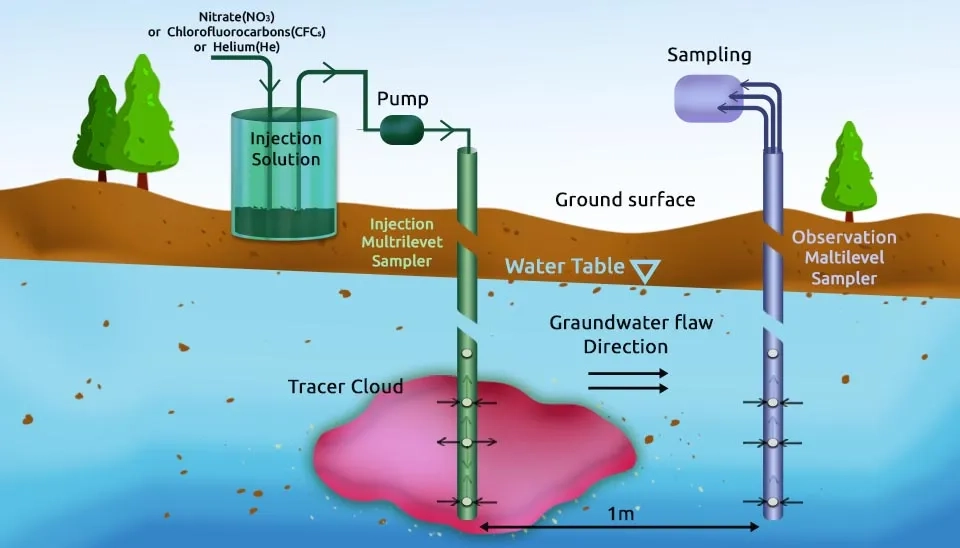
1.2.1. Chloride Mass Balance Method
The chloride method is a commonly used technique for estimating groundwater recharge. This method relies on the fact that chloride is a conservative ion, meaning it does not undergo chemical reactions in the soil or groundwater. By measuring the concentration of chloride in the groundwater and comparing it to the natural chloride content of precipitation, researchers can estimate the amount of water that has been added to the groundwater system (Niazi et al., 2017).
The chloride mass balance method provides a direct estimation of groundwater recharge.
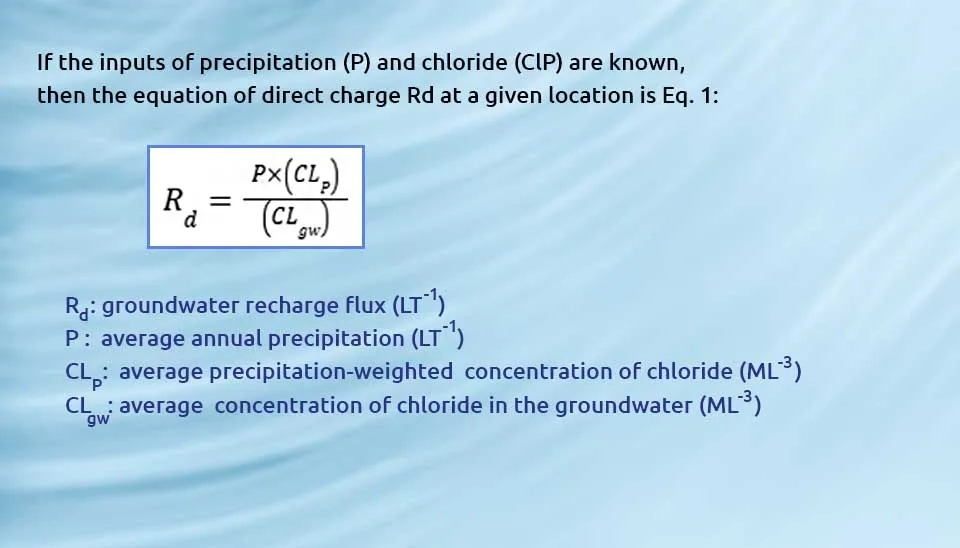
M is mass, T is time, and L is length in consistent units (Wood, 1999).
It's important to note that while the chloride method is widely used, it has its limitations and assumptions. Changes in land use, human activity, and other chloride sources may all have an impact on it. Therefore, researchers often combine the chloride method with other hydrological and geochemical methods for a more comprehensive understanding of groundwater recharge.
1.3. Water Budget Method
The water balance method estimates groundwater recharge from the water budget equation. A water budget is an accounting of water movement into and out of, and storage change within, some control volume. The water balance has been widely used. This approach has an advantage since it estimates groundwater recharge using available climate data. The parameters of the water balance method are precipitation, runoff, evapotranspiration, and changes in soil water storage. By understanding and quantifying these components, researchers can estimate the amount of water that contributes to groundwater recharge (Weatherl et al., 2021). The water balance method is classified as an indirect physical method because drainage or recharge is not directly measured. The continuity equation, which has the following form, provides the water balance method for recharge of groundwater.
Recharge=Input-Output-Change in Storage

This technique can be implemented on a varied range of spatial and temporal scales. However, the main limitation of this method is that the accuracy of the recharge estimates depends on the accuracy with which other elements of the water balance equation are measured (Burri et al., 2021). The units for all components in the hydrologic budget equation are in volume per time period.

1.4. Water Table Fluctuations (WTF)
The water table fluctuation method, by evaluating water level fluctuations, provides an estimate of groundwater recharge(USGS). The WTF method can be used for unconfined aquifers ( Águila et al., 2019) . The water table fluctuation method is based on measuring groundwater levels over time and space. The WTF method is based on the premise that rises in groundwater levels in unconfined aquifers are due to recharge water arriving at the water table. The advantage of the WTF method is that there are no assumptions about the actual charging processes, for example, the existence of preferred flow paths. However, this issue can also be considered a disadvantage because a relationship between precipitation and recharge has not been established. This makes the WTF method unsuitable for future predictions of groundwater recharge rates when precipitation patterns change due to climate change.

where R, Sy, h and t are recharge, specific yield, water table depth, and time, respectively (Healy and Cook, 2002).
The important factor in the application of the WTF method in the estimation of groundwater recharge is specific yield (Sy). According to the definition of Sy is the ratio of the volume of water that drains by gravity to the total volume of the saturated porous medium.
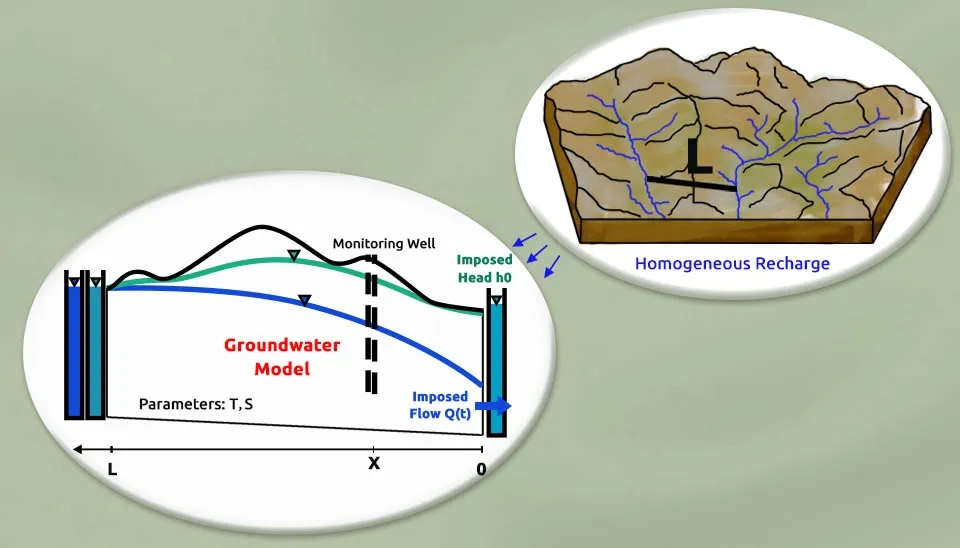
1.5. Empirical Methods
Several empirical equations have been developed to estimate the groundwater recharge. The empirical equations reflect the relationship between precipitation and groundwater recharge. For example, Chaturvedi (1973) proposed the empirical equation (Eq. 4) based on the water level fluctuation and rainfall.
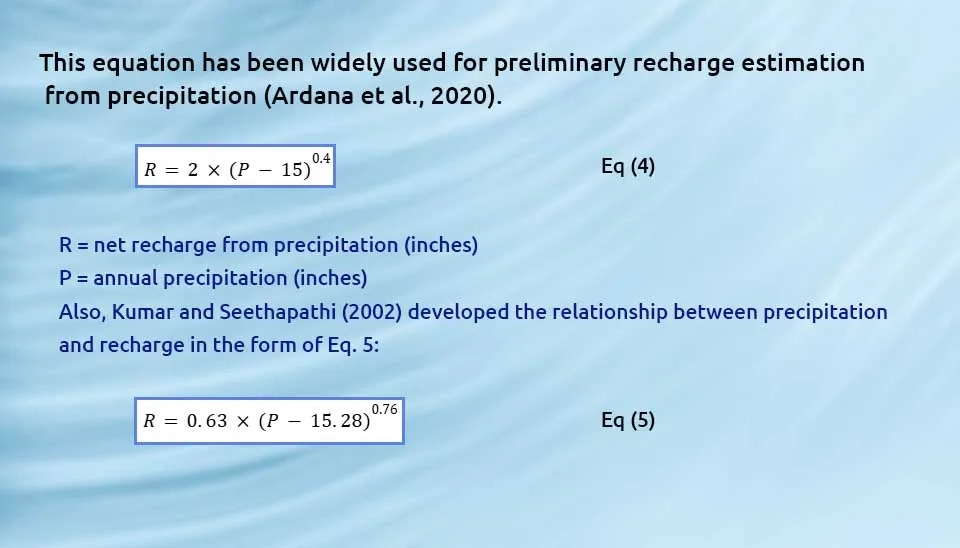
1.6. Lysimeter
Groundwater recharge estimation using lysimeters is a method employed to measure and quantify the amount of water that infiltrates into the subsurface and contributes to the replenishment of groundwater resources. A lysimeter is a device or instrument designed to collect and measure the percolation or drainage of water through a specific soil profile. An important feature of lysimeters is that they provide a control volume in which a number of components of the water balance can be directly measured, thus providing the necessary data for calibrating numerical models that are later used to predict recharge (Rockhold et al., 1995). There are different types of lysimeters, but in the context of estimating groundwater recharge, weighing lysimeters are commonly used. Weighing lysimeters work by directly measuring changes in the weight of a soil column in response to precipitation, irrigation, and other environmental factors. The data collected from lysimeter studies is then used to calculate the groundwater recharge rate through a detailed water balance analysis (Post et al., 2022).
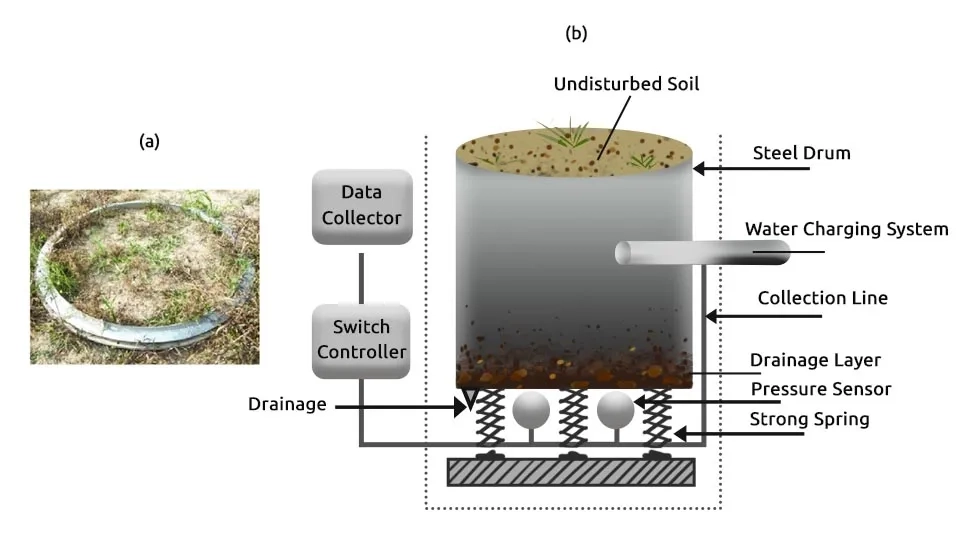
2. Conclusion
Assessment of groundwater recharge estimation is an indispensable component in groundwater systems to confirm the suitable management of aquifers, especially in areas where groundwater is a significant source of drinking water and irrigation. Despite the estimation of groundwater recharge methods' utility, it is important to acknowledge the limitations and challenges associated with these methods, such as data quality issues and the need for careful consideration of hydrogeological conditions. Integrating multiple approaches, including field observations, aquifer testing, and groundwater modeling, enhances the robustness of recharge estimations.
